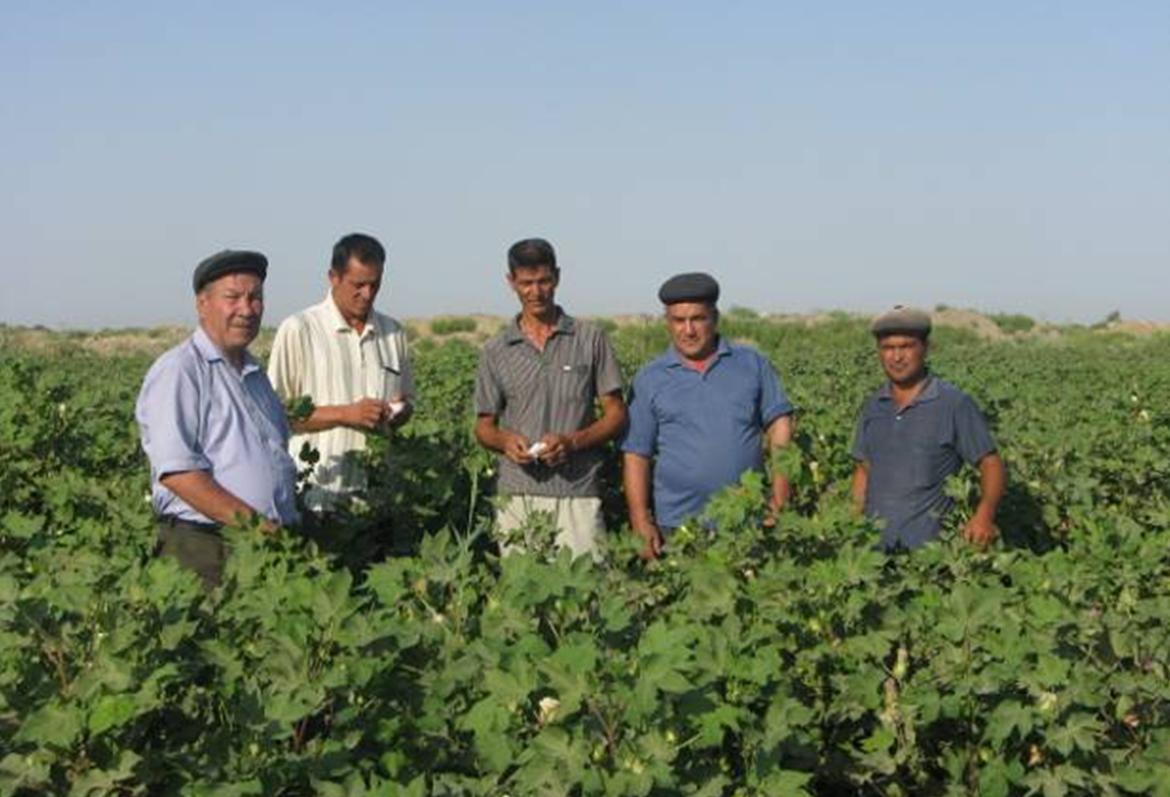
Turkmenistan is a water stressed country with one of the harshest climates in the Central Asian region. Climate change modeling indicates significant increases in temperature and reduction in rainfall. This will lead to a decrease in total volume of water availability that is likely to have a profound impact on agricultural production systems and local farmers. The long-term solution envisaged by the Government of Turkmenistan is to mainstream climate change adaptation in order to secure climate resilient livelihoods in agricultural communities.
To help the government meet this objective, the 5-year "Supporting Climate Resilient Livelihoods in Agricultural Communities in Drought-Prone Areas of Turkmenistan" project supported three inte-related components:
(i) improving climate-related socio-economic outcomes in agricultural communities in Lebap and Dashoguz velayats through community-based adaptation solutions;
(ii) mainstreaming climate adaptation measures in agricultural and water sector development strategy and policy; and
(iii) strengthening national capacity for iterative climate change adaptation planning, implementation and monitoring in the country.
- National
- National Governments
- United Nations Development Programme (UNDP)
- Global Environment Facility (GEF)
Expected outcomes
Outcome 1: Improved climate related socio-economic outcomes in the targeted agricultural communities in Lebap and Dashoguz velayats through the implementation of community-based adaptation solutions.
Outcome 2: Mainstreamed climate adaptation measures in agricultural and water sector development strategy and policy.
Outcome 3: Strengthened national capacity for iterative climate change adaptation planning, implementation and monitoring.
By strengthening the adaptive capacity and reducing the vulnerability of over 40,000 to 50,000 persons (8,000 to 10,000 households) among the pilot daikhan and livestock associations in the Lebap and Dashoguz target regions, the project will help farmers improve the productivity of their farm operations, be better prepared for increasing water scarcity and introduce alternative income sources.
The project will develop and demonstrate a matrix of climate adaptation solutions for further replication outside of the two velayats. It will focus on increasing the resilience of water resources for the most vulnerable and water-stressed communities, which are engaged in non-state agriculture and livestock management and which are unlikely to benefit from government ́s large-scale water supply and storage infrastructure.
The project seeks to support innovation in the project through the testing, demonstration and replication of adaptation practices in the following areas: (i) participatory planning processes that integrates adaptation into agricultural and water investments at the local level; (ii) integration of adaptation approaches at the sectoral policy level in agriculture and waters sectors; (iii) mainstreaming adaptation into the national planning and budget allocation process; (iv) technological innovations for efficient water use, soil and water conservation and adaptive agricultural practices and crop practices; and (v) enhanced responsibilities for water management at the diakhan association level.
The project will be carried out under a National Implementation Modality (NIM). UNDP will act as a senior supplier and the UNDP country office will provide support services to the project at the request of the Ministry of Nature Protection. As a national partner the Ministry of Nature Protection of Turkmenistan will oversee all aspects of project implementation. Other national partners are Ministry of Agriculture, Ministry of Economy and the Ministry of Foreign Affairs. On quarterly basis, Project Management Unit will organize meetings with stakeholders, such as the main farmer and livestock associations, to discuss achievements, challenges faced, corrective steps taken and future corrective actions needed for the implementation of planned activities.
MOTHER NATURE’S BOUNTY by UNDP Climate on Exposure
- Building resilience in Dashoguz and Lebap through local adaptation to climate change
- Self-grown community leaders champion alternative financing
- Vermicomposting - A Source of Alternative Income for Women in Agriculture
- Solar-powered water breeds life in the Turkmenistan desert
- Empowering local action against the climate change
- Sustainable Cities - territory of the future
Outcome 1: Improved climate related socio-economic outcomes in the targeted agricultural communities in Lebap and Dashoguz velayats through the implementation of community-based adaptation solutions. Achievement of Outcome 1 is supported through the following outputs:
Output 1.1: Participatory vulnerability and adaptation assessments in selected communities to identify priority adaptation solutions;
Output 1.2: Development and implementation of local gender sensitive adaptation plans;
Output 1.3: Implementation of innovations focused on providing additional income and supporting climate UNDP Environmental Finance Services Page 30 resilient livelihoods;
Output 1.4: Participatory mechanisms for implementing and monitoring changes in community climate resilience;
Output 1.5: Dissemination and up-scaling of successful adaptation measures.
Outcome 2: Mainstreamed climate adaptation measures in agricultural and water sector development strategy and policy. Achievement of Outcome 2 is supported through the following outputs:
Ouput 2.1: Capacity development for agriculture and water sector enabling effective adaptation planning with gender considerations;
Ouput 2.2: Guidelines to water and agriculture sector ministries on using gender disaggregated data in planning, conducting specific assessments on the needs of women and using these in sector adaptation planning and budgeting;
Ouput 2.3: Regulation and guidelines for inclusion of adaptation in national and local development planning and budgeting developed and linked to sector based planning, coordination and monitoring processes;
Ouput 2.4: Institutional and legal mechanisms for water resource management integrate key principles of efficient use and climate risk management.
Ouput 2.5: National sectoral planning and rural development investments take account of and address climate change related risks.
Ouput 2.6: Ecosystem services valued and potential impacts of climate change on natural pastures assessed to inform pasture management decision-making
Outcome 3: Strengthened national capacity for iterative climate change adaptation planning, implementation and monitoring. Achievement of Outcome 3 is supported through the following outputs:
Output 3.1: Mechanism for iterative monitoring, reporting and verification of implementation of the mainstreamed adaptation actions established.
Output 3.2: Vulnerability/resilience indicators and protocols for gender-disaggregated data collection, storage, processing and use in planning and decision-making.
Output 3.3: Actions to build the evidence base for robust decision making implemented.
Output 3.4: Communication and outreach strategy to support the medium and long-term adaptation planning of NEPAAM developed and implemented.
